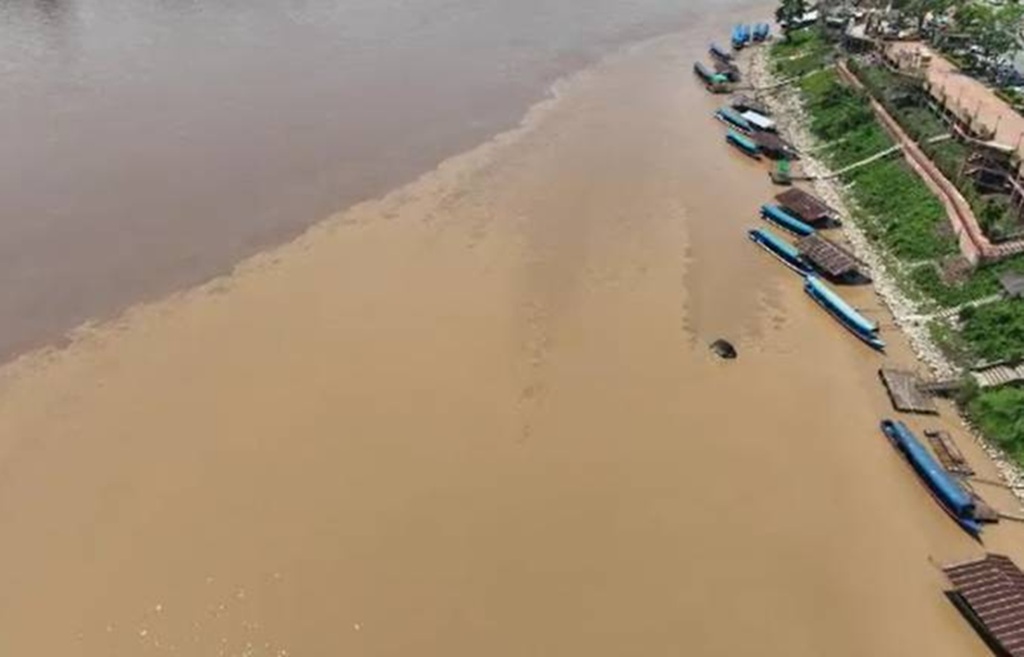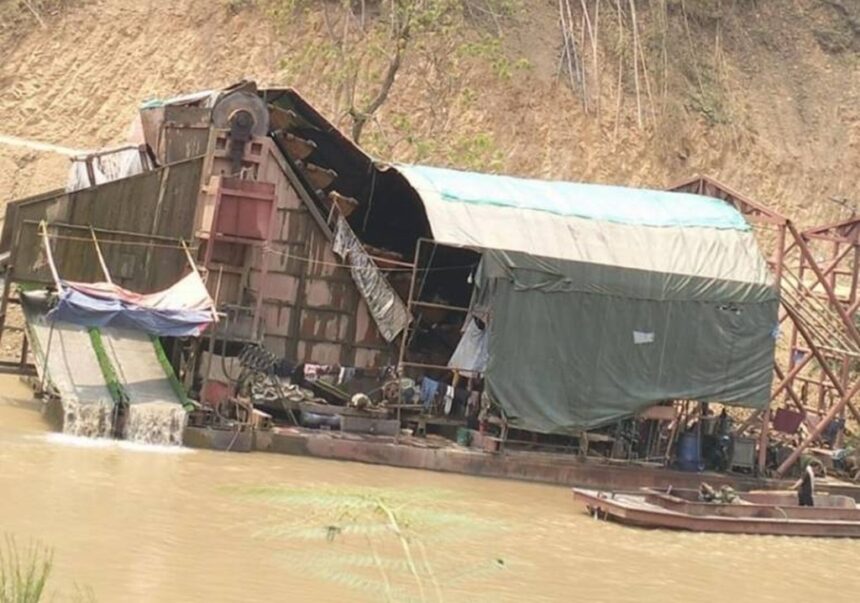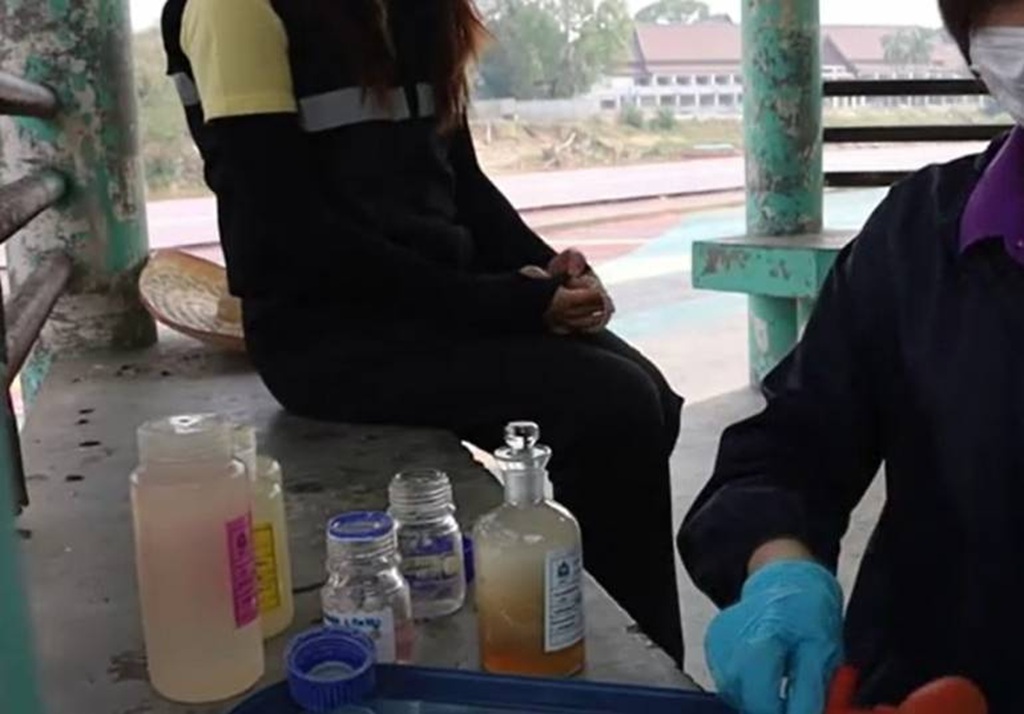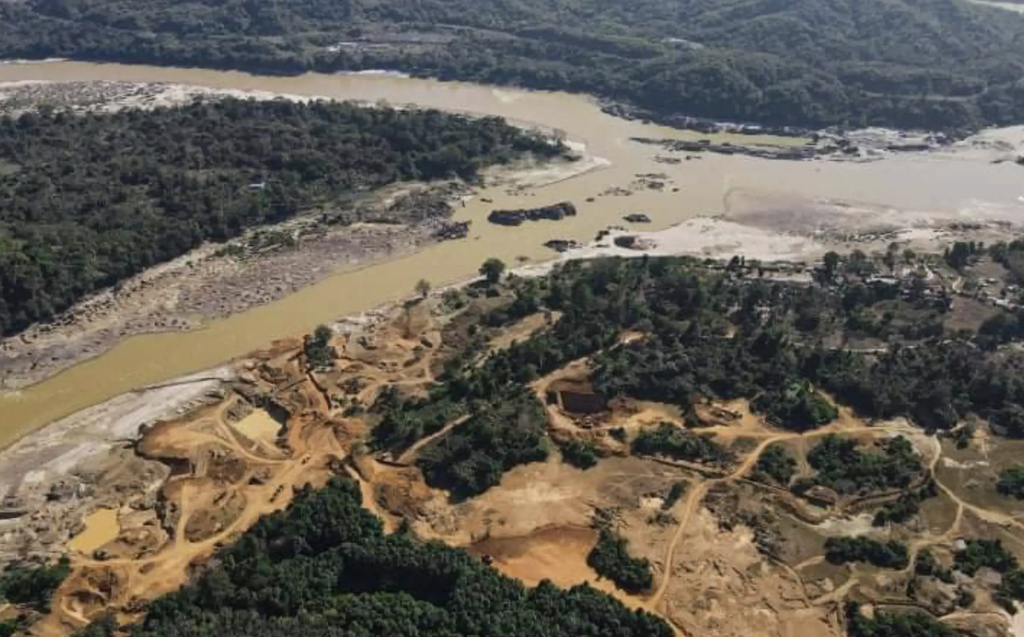CHIANG RAI – Penchom Saetang, Director of the Ecological Restoration Foundation, spoke at an event held at the National Human Rights Commission of Thailand on the issue of gold mining in Myanmar and its cross-border effects, especially heavy metal pollution in the Kok and Sai rivers.
After hearing from both local communities and government agencies, she shared her deep concern. Many share these worries, but no clear path forward exists at the moment.
Penchom pointed out that solving this problem within Thailand is difficult, as the source of pollution is across the border in Myanmar. Any solution must address the root cause in Myanmar, which calls for international talks. China should be included in these discussions, as it is closely connected to the issue.
She referred to reports showing that before 2017, China cracked down on illegal mining, especially gold mining. Factories and companies breaking the law, including recycling plants and mining operations, were shut down as China worked to improve its environment.
As Chinese authorities closed these operations, many believe some companies moved their activities to Thailand or, more notably, to Myanmar. Estimates suggest that about 11 gold mines are now active in Myanmar.
These mines likely operate by blasting the earth to access gold ore, leaving behind large piles of waste rock and soil.

Arsenic and Mercury Released
Heavy metals, particularly arsenic and mercury, are released into the environment during mining. The situation on the ground makes it almost impossible for Thai authorities to tackle the source directly. If mining continues unchecked, areas like Chiang Rai and Mae Sai could become among the most polluted in Thailand.
Penchom said that resolving this issue requires urgent discussions with Myanmar, backed by clear data. While Thailand is suffering the consequences, Myanmar and China have not experienced the same impact.
She stressed that negotiations without supporting evidence will not work. Authorities must assess the damage in three key areas: economic, health, and environmental restoration.
This should focus on districts like Mae Ai in Chiang Mai and regions of Chiang Rai that are most affected by pollution.
First, the economic loss must be calculated, including the financial impact since mudslides and pollution began. For health, the long-term effects, especially from arsenic and lead exposure, need to be estimated. This calls for epidemiological studies, which the Ministry of Public Health should fund to track the health impacts over time.
The third point is the cost of cleaning up toxic waste. Restoring polluted rivers can require huge budgets. For example, in Japan, efforts to clean up cadmium in the Jinzu River cost so much that it was left to nature, while rice paddies were restored by removing contaminated soil.
Chiang Rai Water Contamination
In Chiang Rai, the scale of contamination is still unknown. If heavy metals exceed safe limits, the waste would be considered hazardous and may need to be removed, raising the question of where to dispose of it safely.
Past cases in Thailand, like the Klity Creek in Kanchanaburi, show how expensive cleanup can be. The Pollution Control Department spent over 650 million baht to remove lead-contaminated sediment from a much smaller site compared to Chiang Rai.
Long-term monitoring and prevention are crucial. Penchom highlighted the need for regular testing of river sediments and water quality. Local authorities must invest in ongoing surveillance to track the spread and build-up of toxins like arsenic in both water and soil.
This information helps people in Chiang Rai know whether their water and environment are safe. If contamination levels are high, the area should be declared unsafe to protect public health.
Food safety is also a concern. Water from the Kok and Sai rivers is used to irrigate crops. Random testing should check if toxic substances are entering the food chain. Arsenic, a known carcinogen, can cause harm with long-term exposure.
Other areas, like Ron Phibun in Nakhon Si Thammarat, have dealt with lingering contamination for decades.
Talks at Higher Levels
Underground water routes are not fully mapped, so it’s important to sample both shallow and deep well water. Knowing if water sources are contaminated helps set safety measures for drinking and domestic use. So far, government guidance has mostly offered advice, not concrete solutions.
River communities have suffered economic losses. People can’t fish or use water for farming. This hardship is significant.
Government agencies are trying to do their part, but this issue requires urgent international talks. Thailand needs clear data on the damage, especially the economic impact on Chiang Rai, to present in negotiations with Myanmar.
A representative from the Department of East Asian Affairs at the Ministry of Foreign Affairs explained that the Thai Embassy in Yangon has contacted Myanmar’s government to verify the facts and seek solutions. In Thailand, Myanmar’s ambassador has been invited for discussions to express concerns about the situation and its effects on Thailand.
Talks at higher levels, including ministry and government officials, are ongoing. If there are meetings with Myanmar’s leadership, mining and its impacts will be raised.
The East Asian Affairs representative also suggested that local security units near the border could help with negotiations, working from the community to the military level. Regarding Myanmar’s mining regulations, the department said more research is needed.
The problem remains urgent, and clear action backed by solid information is needed to protect people and the environment in northern Thailand.
















